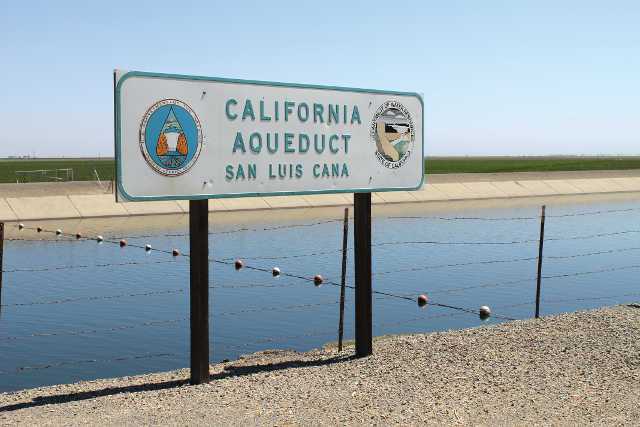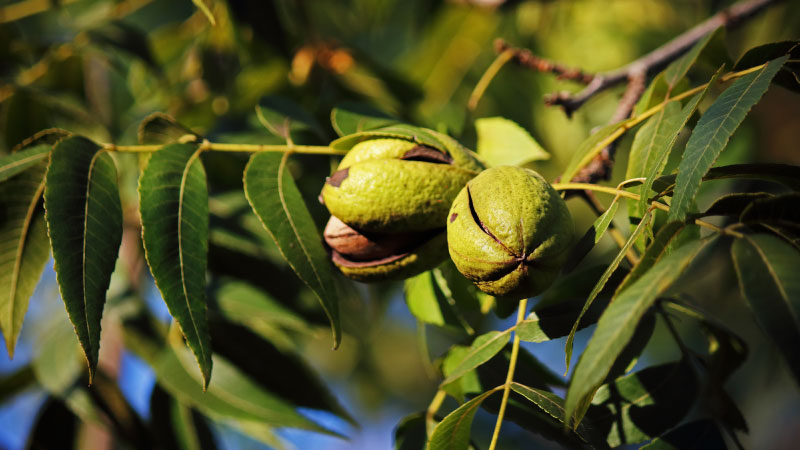No Federal Water For California’s Central Valley Growers – Again

(Photo credit: David Eddy)
In a move that surprised practically no one, the Bureau of Reclamation today announced that growers shouldn’t expect any water from the Central Valley Project (CVP) for the second year in a row.
The announcement was expected, because California Department of Water Resources (DWR) reports that the snow water content statewide is at best 20% of average for this time of year.
California is experiencing its fourth consecutive year of below-average precipitation, and the governor’s emergency drought proclamation, issued Jan. 17, 2014, remains in effect. Without unusually heavy precipitation over the next few months, extreme drought conditions are forecasted to persist throughout the Central Valley.
In addition, reduced amounts of water are expected to be available from the CVP for urban uses, although Reclamation anticipates having adequate supplies to provide for unmet health and safety needs for these water users.
Reclamation’s initial CVP allocations are primarily based on CVP reservoir storage levels and DWR’s February 2015 Runoff Forecast, which indicates another critically dry water year for both the Sacramento Valley and the San Joaquin Valley.
Reclamation began Water Year 2015 in October 2014, with only 3.1 million acre-feet of carryover storage in six key CVP reservoirs. This was 26% of capacity and 47% of the 15-year average for October 1.
Since that time, the state has seen several significant rain events but also extended periods of very dry weather. January 2015 was the driest January in recorded history for northern California.
With low storage and extremely low snowpack, Reclamation’s water managers will work with the state of California and all contractors to effectively carry out project operations and improve water supply consistent with all applicable laws.
Based on low forecasted inflows to Shasta Lake, the state’s largest reservoir, Reclamation is also projecting this year to be a second consecutive “Shasta Critical Year” for the purposes of determining maximum contract quantities for many senior water rights holders and wildlife refuges in the Central Valley.
If current dry conditions persist, CVP water contractors, whose water supply is based upon senior water rights and the Shasta Critical criteria, will see their contract supply reduced. Although project supplies are limited, Reclamation is committed to working with these contractors to meet their demands through the summer.
“We are bracing for a potential fourth year of severe drought, and this low initial allocation is yet another indicator of the dire situation,” said Reclamation Mid-Pacific Regional Director David Murillo said in a press release. “Reclamation and the Department of the Interior will continue to work with the state of California and our water users to do everything possible to increase water deliveries from the project as we move yet another difficult year. Our economy and our environment depend on it.”
Reclamation determines the allocation of CVP water for agricultural, environmental, and municipal and industrial purposes based upon many factors. Today’s initial allocation, based on a conservative runoff forecast, is driven by critically dry hydrologic conditions, low storage levels, water quality requirements, flow objectives, relative priority of water rights, and endangered species protection measures.
Reclamation and DWR are operating consistent with the 2015 Drought Contingency Plan submitted to the State Water Resources Control Board that outlines numerous actions to help the CVP and State Water Project manage limited water supplies during these drought conditions. This includes expanding operational flexibility to conserve stored water and take full advantage of excess and abandoned flows in the Delta.
“The rain events in December were encouraging, but the persistent dry weather the first two months of this year underscores our need to plan for another critical year of drought. We have been working closely for months with our state and federal agency partners to try to minimize impacts and will continue to do so,” Murillo said.
This initial set of CVP allocations is based on a conservative assumption that dry conditions will continue for the remainder of the water year. With almost two months remaining in California’s rainy season, there is still an opportunity for improved conditions. If conditions improve and hydrology is closer to or above average for the next several months, CVP supplies could improve, with increased supplies to M&I contractors and potentially some water available for allocation to agriculture water users.









